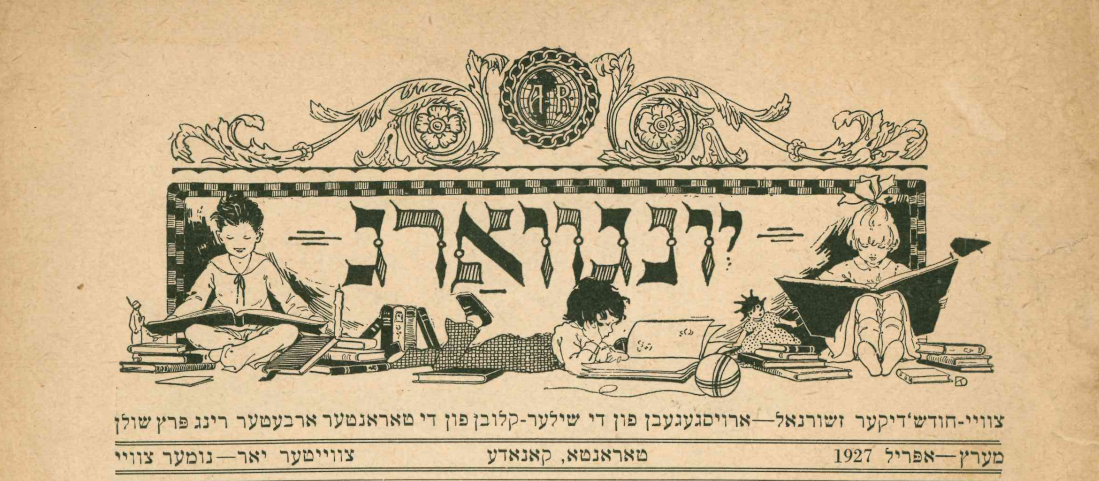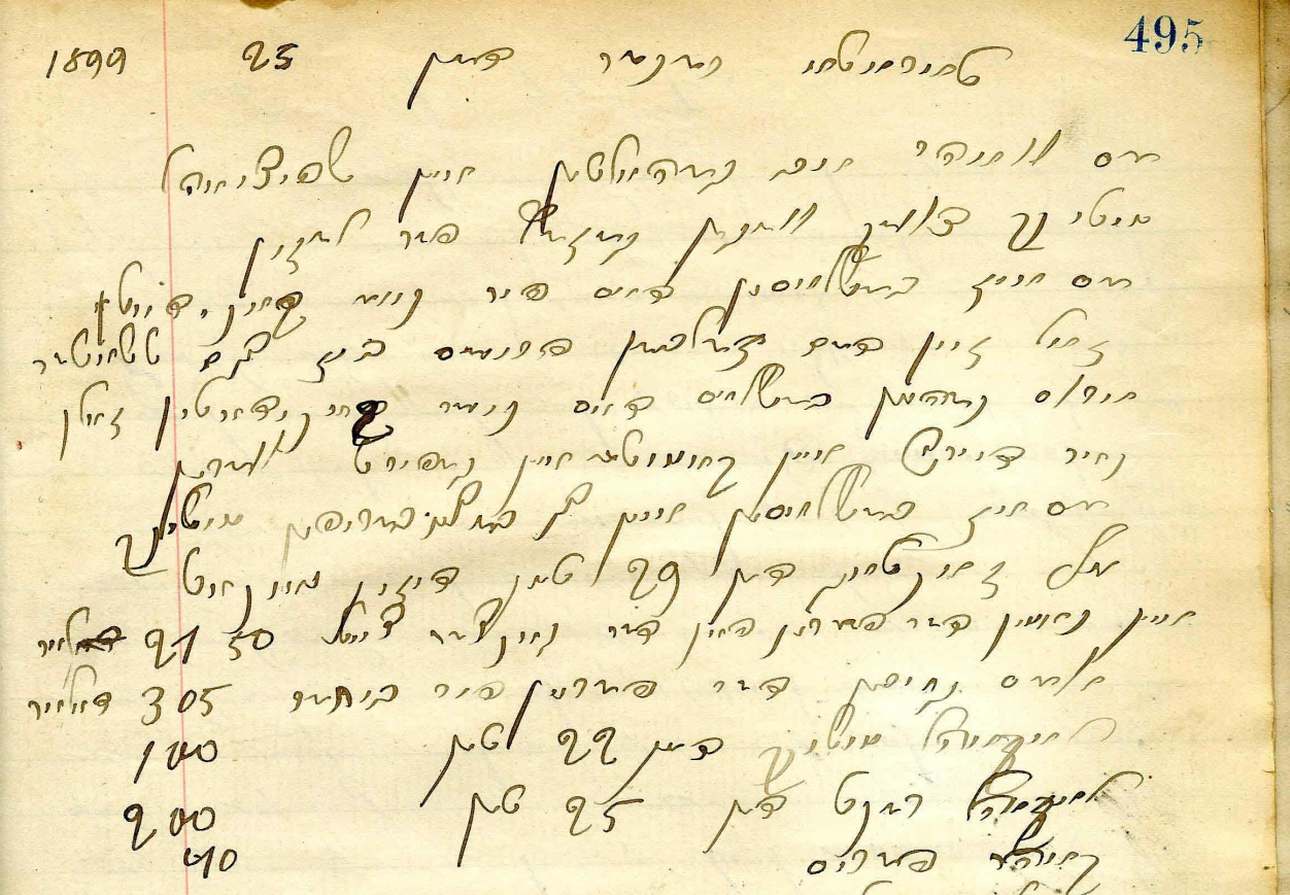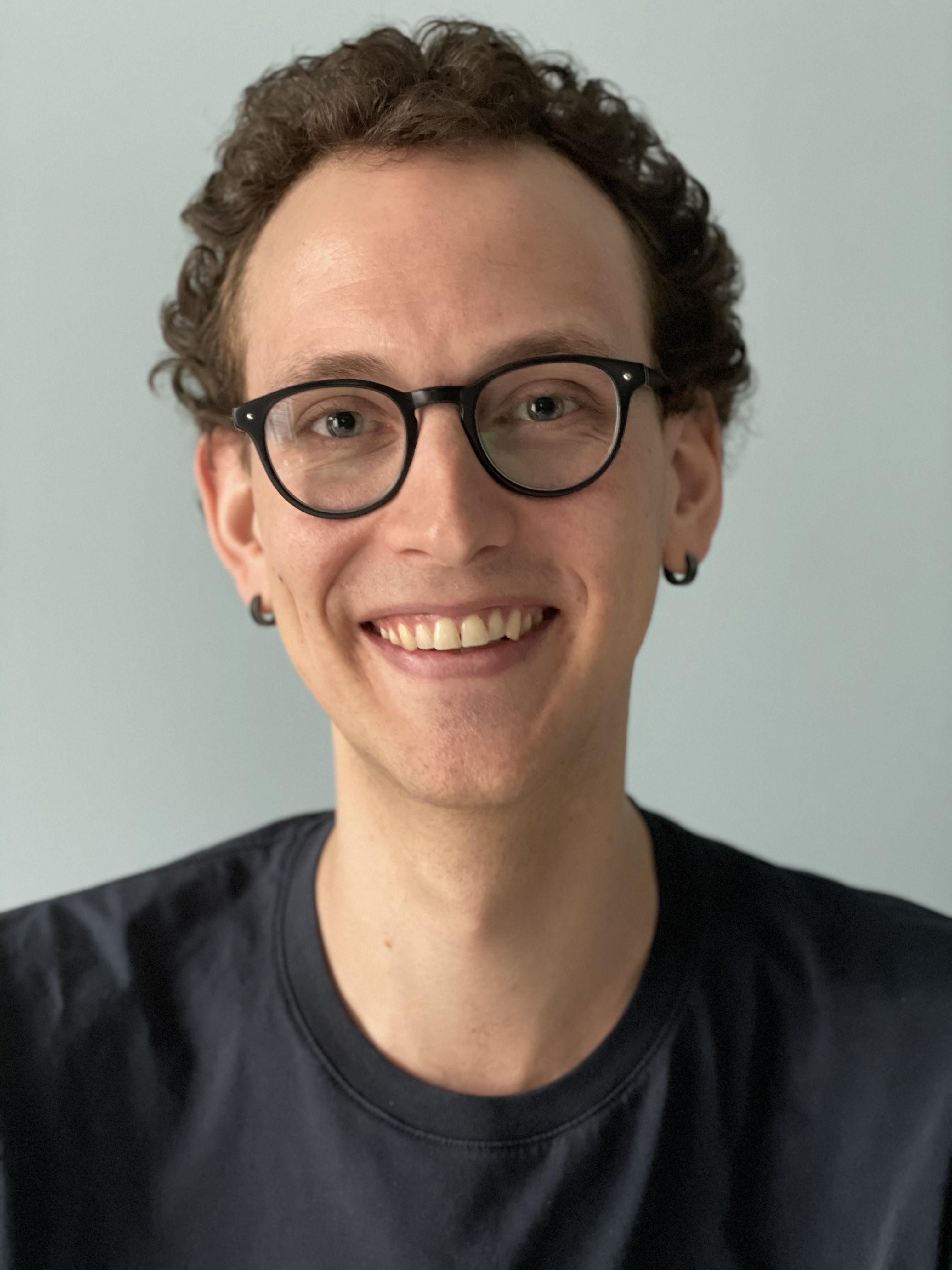By Graeme Myers
As a student of Yiddish, I was immediately drawn to the opportunity presented by an internship at the Ontario Jewish Archives. The chance to work with historical Yiddish documents while improving my language and translation skills was extremely exciting. This opportunity at the OJA allowed me to build upon two years of studying the Yiddish language by gaining practical experience working with older texts.
My time at the OJA began with the examination of an 1927 issue of the Toronto Arbeter Ring (Workers Circle) Youth Magazine, Yungvarb. On the pages shared with me, I discovered a beautiful poem written by Yitzhak Katzenelson—the well-known poet. Working on the text was a true test of my knowledge of the Yiddish language and translation skills. While I had much previous experience translating Spanish texts, Yiddish poetry provides an entirely different kind of challenge, with rhyme structure, word choice and etymology, as well as syntax all adding extra considerations and layers of complexity to the process. Reading it over and over, I slowly worked through the translation line-by-line, doing my best to preserve the meaning of the text alongside its feel and flow. A beautiful poem deserves an equally well-considered translation, which I strived to achieve.

Next, I turned to the handwritten documents, a series of letters, which presented new and much more trying challenges. While I was familiar with Yiddish handwritten texts, historical script and calligraphy can be daunting to attempt to read, let alone translate. In many cases, these letters contained non-standard orthography and spelling, as well as faded script and styles I wasn’t familiar with. So, I set out to find some materials for reference.
While researching examples of older Yiddish handwriting, I discovered the work of the Dybbuk Project. Based out of the University of Haifa, they had spent the last few years building a model for the analysis of Yiddish handwritten texts. Using the software Transkribus and the Dybbuk model to analyze the letters’ handwriting, I began to work through the first of the letters from the OJA collection, reading slowly through each line and comparing any words I couldn’t make out initially with the analysis from the Dybbuk model. Though slow-going and requiring long periods of focus, this process allowed me to begin to recognize certain patterns within the letter— from the way certain letters were written, or contractions were used, to spellings that differed from the standardized forms I had learned. The Dybbuk Project’s model allowed me to create multiple reference points and better understand these documents as I worked through them.
 On a personal note, examining and working with the OJA’s documents has been both difficult and extremely rewarding, with content that ranges from the deeply upsetting to the humorous or joyous. The study of Yiddish is important to me for a number of reasons, not least of which is that it was the language of much of my family and my grandfather still speaks it. But beyond individual ties, translating Yiddish archival documents for today’s audience provides an important opportunity to preserve individual stories, moments of joy and sadness, that can resonate with all of us. To paraphrase my first Yiddish professor: you can say anything and everything in Yiddish. Preserving and sharing these words with a broader audience is a task I’m honoured to have played the smallest of parts in.
On a personal note, examining and working with the OJA’s documents has been both difficult and extremely rewarding, with content that ranges from the deeply upsetting to the humorous or joyous. The study of Yiddish is important to me for a number of reasons, not least of which is that it was the language of much of my family and my grandfather still speaks it. But beyond individual ties, translating Yiddish archival documents for today’s audience provides an important opportunity to preserve individual stories, moments of joy and sadness, that can resonate with all of us. To paraphrase my first Yiddish professor: you can say anything and everything in Yiddish. Preserving and sharing these words with a broader audience is a task I’m honoured to have played the smallest of parts in.
I’d like to thank the OJA once more for the opportunity to take part in the internship program!
 Graeme Myers, Master’s Student, Centre for Comparative Literature & Centre for Jewish Studies, University of Toronto
Graeme Myers, Master’s Student, Centre for Comparative Literature & Centre for Jewish Studies, University of Toronto